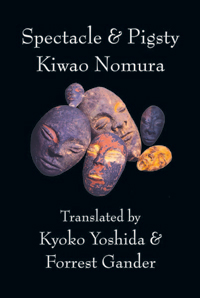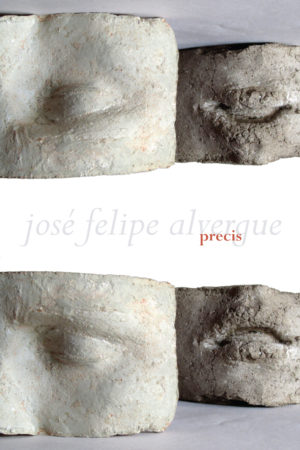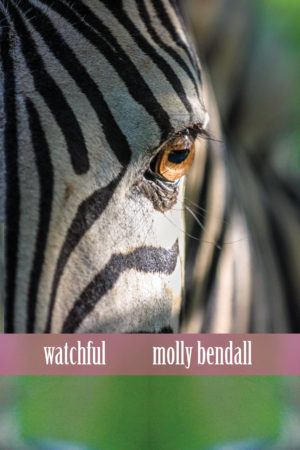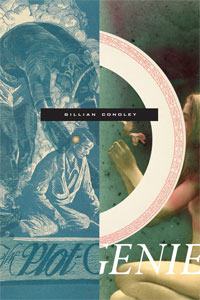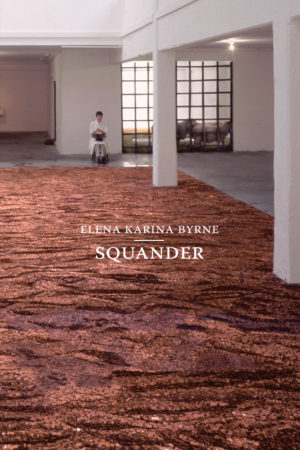Description
Translated by Kyoko Yoshida and Forrest Gander
Japanese on facing pages
If you think of haiku when you think of Japanese poetry, this book will be a huge surprise. The strange and wild poems of Kiwao Nomura deal with sex and loss and memory by making unpredictable leaps of association. Imagine Fugazi singing philosophy and you get close. Inspired by shamanism, Kiwao Nomura sounds like nothing you’ve ever heard before and like something you want to hear over and over. He is one of the two or three of the most influential living Japanese poets, and his work will be as stunningly original and compelling to contemporary Americans as haiku was to the late Victorians. Anyone interested in making contact with Japanese culture will want to read Spectacle & Pigsty.
Winner of the 2012 Toson Memorial Rekitei Prize for Poetry:
Nomura’s poetry is not abstruse at all. At least it is absolutely free of the frowning kind of abstruseness. It is rather full of luminosity and felicity that are Nietzschean and Deleuzean. This is particularly salient in “Spectacle & Pigsty,” his collected poems in English translation that has won the Best Translated Book Award in poetry in 2012. This is a superb anthology of Nomura Kiwao and it is in the best possible translation one could hope for. There has never been poetry in Japanese that exhibited such affinities in the English language. This is a proof that his poetry is open to the wide world.
Winner of the 2012 Best Translated Book Award:
Spectacle & Pigsty is the first full collection of Kiwao Nomura’s poetry to be published in English translation. These strange and wild poems deal with sex and loss and memory by making unpredictable leaps of association. In the words of his publisher, Omnidawn, if you “imagine Fugazi singing philosophy” you can get a sense of what his poetry was like.
About the Author
Reviews
Excerpt
Kiwao Nomura was born October 20, 1951 in Saitama Prefecture. He graduated from Waseda University, majoring in Japanese literature. A leading writer of the post-war generation, he is in the forefront of contemporary poetry. At the same time, he is known to be a prolific critic, translator, and essayist on comparative poetics. His work has been translated into many languages and published in magazines abroad, especially in France and the United States. He has performed internationally and released two CDs of collaborations with musicians. He played a leading role in Contemporary Poetry Festival 95, Poetry Goes Out and Contemporary Poetry Festival 97, Dance and Poésie. In 2007, he organized The Festival of International Poetry: Toward the Pacific Rim. From August to November 2005, he was a fellow at the International Writing Program at the University of Iowa in the United States. In December of the same year, he served as a director of the Japan-European Contemporary Poetry Festival in Tokyo.
Kyoko Yoshida was born and raised in Fukuoka, Japan. She was a participant of the 2005 International Writing Program at University of Iowa. Her stories have been published in The Massachusetts Review, Chelsea, The Cream City Review and The Beloit Fiction Journal, among other places. She is working on a novel about the visit of American Negro League baseball players to Japan in the 1930’s. In addition, she translates Japanese contemporary poetry and drama. Recently a Visiting Scholar at Brown University, she teaches English at Keio University and lives in Yokohama.
Forrest Gander is the author of books of poems, translations, and prose, much of it published by New Directions. He has edited several anthologies and translated individual books by Latin American writers. Two of his books of translation have been PEN Translation Award Finalists. Recent titles include Eye Against Eye (poetry with photographs by Sally Mann), the novel As a Friend, and translations of Mexican poet Coral Bracho (Firefly Under the Tongue: Selected Poems). A United States Artist Rockefeller fellow, Gander is also the recipient of fellowships from the NEA and the Guggenheim, Whiting, and Howard foundations. He is Professor of English and Comparative Literature at Brown University.
An interview with Forrest Gander, co-translator
(conducted by Rusty Morrison)
How did you come to this project? How did the idea develop? Tell us how you met Mr. Nomura?
I met Kiwao Nomura in Japan in 2010. He was standing in a green room surrounded by flamenco musicians from Sevilla, modern dancers from Yokohama, and a famous one-eyed butoh performer from Tokyo. I had come backstage after a performance choreographed by Mariko Nomura, a well-known dancer and choreographer and Kiwao’s wife.
Our meeting came about through Kyoko Yoshida, a fiction writer who came to Brown University as a visiting scholar in 2009. When Kyoko figured out that I was very interested in contemporary Japanese poetry, and particularly in the work of Gozo Yoshimasu, she said she thought I would like Kiwao Nomura’s work. The trouble was that there were very few translations available. I don’t remember if it was Kyoko or me who suggested that we try to translate some of Nomura’s poems together. But that’s how the project began.
Can you describe your methods as a translator when working in this kind of collaboration with a fellow translator? How did the two of you engage in the act of revision? Was Mr. Nomura (the poet you are translating) involved in the process?
In the late 70’s and early 80’s I fell in love with Japanese literature and culture. I studied Japanese briefly in college and I traveled to Japan for the first time in 1985. But I don’t speak or read Japanese. Besides being brilliant and bilingual, Kyoko was the most diligent co-translator imaginable. After we talked about the range of poems we wanted to include, Kyoko began to send me files. In each file, I would find: the poem in kanji (logographic characters borrowed from Chinese); the poem in romanji (Romanized script so that I could pronounce the sounds); a literal English translation with notes about variables; and a first translation. She would also send me a sound file of her reading the poem. I was traveling a lot during the time that we worked most intently on the translations, and I have distinct memories of people looking curiously at me on buses and in cafes in Europe and Latin America while I listened to Kyoko’s Japanese recitations on my laptop.
I would respond to Kyoko with questions and suggestions and drafts and the translation would travel back and forth between us over and over. For the most part, Kiwao, who doesn’t speak English fluently, trusted us to do the job.
What, specifically, were some of the largest or most daunting challenges you faced as you worked through the text? And, the most exciting rewards or surprises?
What we find in innovative Japanese poetries like Gozo Yoshimasu’s and Kiwao Nomura’s has, as far as I know, no equivalents in contemporary poetry in English. The mix of the philosophical and the whimsical makes for a tone that is absolutely weird to Westerners. Also, in Japanese there are puns that take place between characters and pronunciations that cannot be accounted for in our alphabet. In one particularly difficult poem, “(or chasm),” Nomura uses characters that allude to Japanese mythology but might also simply be breath-sounds, Hooha and Ketha. But English language breath-sounds would probably sound different from those sounds, just as dog barks are represented by very different onomatopoeic impressions in different languages. In one remarkable and very exciting layer of our translation of this poem, “(or chasm),” Kyoko and I took a class in butoh movement from the butoh dancer, Akira Kasai, to whom it is dedicated.
You are an esteemed translator of Spanish poetry, and you have been active in translation for many years. Has translating Japanese had a different impact upon you? Has this translation project changed you as a writer?
I’m afraid it sounds facile because I think we all know this intuitively, but I’d offer that everything we love changes us. Certainly the forms, the syntactical innovations, and the compositional originality of Nomura’s poems inspire me and offer me new possibilities and models.
When you read translations by other poets, what questions do you bring to the text? What are you looking for? What stimulates your interest? and what sustains your interest?
I depend most immediately on the quality of the language in English. So the same things that draw me to poetry in English draw me to poetry in translation. Since I’m also interested in translation theory and have a smattering of familiarity with several other languages besides Spanish, there are particular questions concerning, for instance, syntactical sequencing or the use of articles and prepositions or rhythmical constructions that may come up. The old questions about whether the translation stuffs the other language into the polished brown shoe of normative English…
Who are the writers you are reading currently for kinship? Who are the writers you are reading currently to be challenged?
Opening up my most recent notebook, I can tell you some of the books I’ve been reading in the last two months: Andrew Zawacki’s Glasscape, Kabir Mohanty’s The Kernel is a Fact, Joan Retallack’s Procedural Elegies: Western Civilization Continued, Anja Utler’s Engulf-Enkindle in Kurt Beals’ translation, Alice Jones’ Gorgeous Morning, Christian Hawkey’s Ventrakl, Alphonso Lingis’ Dangerous Emotions and Rosmarie Waldrop’s Driven to Abstraction.
Are there artists or musicians whom you especially return to? and why?
I’ve been obsessing through a Nico Muhly stage lately. I go back to John Abercrombie regularly. There are two ceramic artists, Rick Hirsch in America and Ashwini Bhat in India, and a glass artist in New York, Michael Rogers, whose respective bodies of work draw me in close. Diane Samuels, yes. The great Mexican photographer Graciela Iturbide and the North American photographers Lucas Foglia, Deborah Luster, Sally Mann, and Raymond Meeks.
Nomura explores his own imagination and discovers the originality of the extreme: “perhaps I’m the first/ poet to write about the perineum.” Gander, a distinguished poet and a prolific translator from the Spanish, teams up with Yoshida (who grew up in Japan) to generate startling, idiomatic versions of a poetry that must be just as discomfiting in the original.
Spectacle & Pigsty, the first full-length English translation of contemporary Japanese poet Kiwao Nomura, tests these limits of translation in both style and substance. Nomura plays with language in radical and diverse ways, employing subtleties of rhythm, semantics, image, gender, punctuation, and repetition, often all within the same short stanza. While it seems Sisyphean to relate these subtleties into a different language, those qualities are also the reason Spectacle & Pigsty can be such an exciting read.
[Nomura’s] poetry is strewn with lusts and chasms enough to conjure not only the convulsive beauty of surrealist aesthetics but also to echo the screams and crashes of Noh and Butoh performance styles. Even viewed through the inevitable blurrings of translation into English, Nomura’s poetry grimaces and dances with a kind of “convulsive grace.”
Nomura’s poems are just as hypnotizing as they are in the original Japanese–darkly gorgeous and radiant, as the ‘orgasm-monger plods past/ nerve ants plod past.’ Norma Cole in her book of essays compares the expansiveness of theater-making to that of her experiences with group translation, and I think she is onto something there–perhaps the future is in collaborative translation.
While multiplying commas and gathering various figures of absence and presence, Nomura acknowledges that the “lodge site” is “barely there,/ as if, just, to prevail over its perishing,/ by virtue of its dearth, effaced, by excess,/ as if, such that, the very trace,/ is barely there, Doppo, it is” (87). In the final section of his perambulating poem of “crawltwisterectdeviatecrossinterlacewear” (89), the poet repeatedly claims that “it is,/ infinitely there” (99). Intense emotion—“we are one after another overcome”—gives authority to “thereness.” One like Kyoko Yoshida who can read “On the Way to the Site. . .” and Doppo’s writing intertextually could flesh out a network, nest, or mesh of allusions that would elucidate the lyric buildup to such an assured conclusion, even as the problem of recuperating traces is ever fraught with abyssal obstacles in the spectacular “pigsty” of continual cultural (re)assessment.
The title poem of this collection by Kiwao Nomura (translated by Kyoko Yoshida and Forrest Gander) alone could take up pages of a review. This poem’s mosaic of images, jostling sensibilities, lush refrains and iterations, as well as the sharpness of pathos hovering over and permeating each tercet, fully compel a reader’s attention.
(scattering dust, we go crazy…)
scattering dust, we go crazy,
dust,
go scattering crazy,
—oh, the sky’s breathmouth,
springlike, erratic,
the sky’s breathmouth, erratic,
curious folds of landscape,
Stillflow River,
running feral there, we go crazy, scattering dust,
—the straw goddess goes spring skiing,
wind diligently at work,
circling fluff of reminiscence,
—the straw goddess goes spring skiing,
and above all, the folds, the curious folds,
over quotidian hills pent up in a pleasure of showers,
lo, and kinked like rope,
then the folds are drawn out,
Stillflow River,
—where a snake skulks, and a meteor plunges,
as we are,
when we close our eyes, ablaze, nothing but small bones,
metamorphogenic then wailing in a stranger’s vagina,
oh, like that, we are,
ashes, invisibly bearing ashes,
—where a snake skulks, and a meteor plunges,
the core of this crazedness cool, and deep,
until
the void goes purely radiant.

